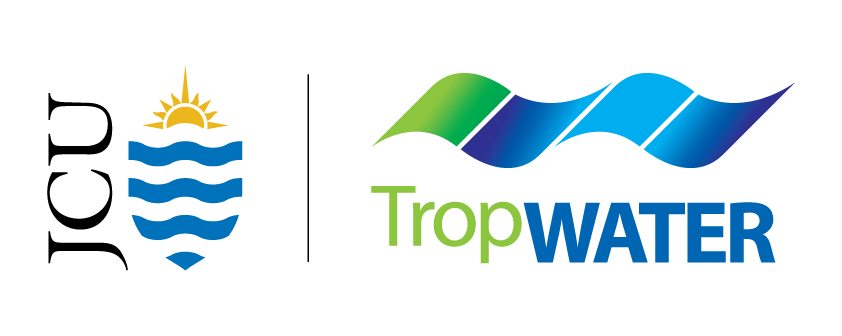A snapshot of TropWATER’s dugong research for World Dugong Day
- emmarehn5
- May 31, 2025
- 3 min read
Updated: Jul 3, 2025

JCU TropWATER researchers have studied dugong populations for decades, and our marine megafauna team continues to lead cutting edge projects to improve our understanding of dugong ecology. This work is critical to effectively conserve this culturally and ecologically important species.
This week, to celebrate World Dugong Day, we’re presenting a snapshot of our work studying dugongs around Australia and globally. All of these projects are designed and undertaken in collaboration with Traditional Owners on their Sea Country.
We’re surveying dugong populations from the air

Where: WA: Shark Bay, Ningaloo, Exmouth Gulf; QLD: Torres Strait, Great Barrier Reef, Hervey Bay, Moreton Bay; QLD/NT: Gulf of Carpentaria
We use small planes to regularly survey dugong populations across northern Australia, with most regions surveyed every five years. Cameras attached to survey planes capture thousands of images, and our researchers are developing artificial intelligence methods to quickly and accurately analyse these images.
Recent surveys showed a decline in dugong numbers across the southern Great Barrier Reef, compared to around 7,000 dugongs living in the waters of the northern Great Barrier Reef.
We’re tagging dugongs to track movement and behaviour

Where: WA: Broome, Shark Bay; QLD: Moreton Bay; New Caledonia; Mozambique
Our researchers are using GPS-satellite and multi-sensor tags to track the movements, diving behaviour and habitat use of dugongs, detecting behaviours not visible from above the ocean’s surface. Understanding how dugongs use their habitats will inform local and regional management and give insights into potential disturbances to dugongs.
Our team has provided specialist technical support for dugong tagging projects in collaboration with African Parks in Mozambique, Yawuru Traditional Owners in Broome, and the Australian National University in Shark Bay.
We’re assessing the health of dugongs

Where: WA Broome; QLD: Townsville region, Moreton Bay
We are developing a non-invasive method to assess dugong body condition using drone-based photogrammetry. Body condition is an indicator of nutritional health, a key element to inform dugong conservation and population management strategies. Drone footage of dugongs is being collected mainly in Cleveland Bay and Moreton Bay (Australia), with plans to expand through collaborations across the dugong’s range.
We’re using new genomic tools to assess dugong genetic health and population connectivity

Where: Australian dugong range, from Shark Bay to Moreton Bay
We are using genomic tools to assess the genetic health and connectivity of dugong populations across northern Australia. This includes whole-genome sequencing and ancient DNA analysis to examine genetic diversity, population structure, historical population changes, and gene flow between regions.
In 2025, as part of a major collaborative effort between JCU researchers and Traditional Owners from across northern Australia, the team sequenced 90 dugong samples from key locations including Shark Bay, Exmouth Gulf, Port Hedland, the Kimberley, the Gulf of Carpentaria, Torres Strait, and different locations throughout the Great Barrier Reef. Samples from Mozambique and New Caledonia were also included to provide broader regional context.
We’re partnering with and training Indigenous sea Rangers on the use of small drones to monitor marine megafauna species

Where: WA: the Kimberley; QLD: Yarrabah, Innisfail, Cardwell, Townsville
TropWATER works alongside Traditional Owners to train Rangers in drone-based monitoring of marine megafauna (such as dugongs) and seagrass habitats. We help Rangers become independent in the use drones to detect and monitor the presence of dugongs and other animals and to map seagrass meadows across tidal zones. This data is used to track seasonal changes, identify key feeding areas, and support Ranger-led long-term monitoring.
These projects support community-led mapping and data collection to strengthen management of Sea Country using both scientific and cultural knowledge.
We’re using small drones to assess the body condition of dugongs

Where: QLD: Cleveland Bay, Moreton Bay
We're developing a non-invasive method to assess dugong body condition using drone-based photogrammetry. Body condition is an indicator of nutritional health, providing key information for dugong conservation and population management strategies. At this stage, drone footage of dugongs is being collected mainly in Cleveland Bay and Moreton Bay, with plans to expand through collaborations across northern Australia
We’re connecting with Traditional Owners to share dugong knowledge

Where: QLD: Great Barrier Reef
Our Dugong Connections project brings together Traditional Owners and scientists to build connections, exchange knowledge, and reshape the way we approach dugong research, monitoring, and management.
Together, we’re respectfully exploring opportunities for knowledge sharing, training, dugong surveys and culturally and ecologically sustainable management practices to help dugong populations remain healthy across the Great Barrier Reef.


